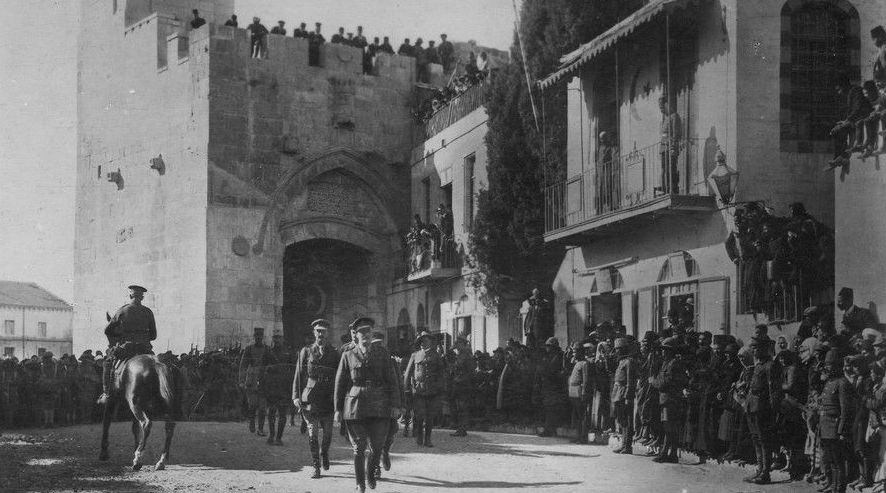Life and Labor on the Suez Canal
hosted by Susanna Ferguson
| The Suez Canal was one of the largest infrastructure projects in the late Ottoman world. Built to connect the Mediterranean to the Red Sea, the canal construction's lasted from 1858-1869 and mobilized tens of thousands of workers from across Egypt and the broader Mediterreanan. Those workers' lives and labor transformed the canal zone and Egypt at large, and their stories, travels, pleasures, and challenges reveal the networks that knit the late-nineteenth century Mediterranean together from below.
 | Click for RSS Feed | 
|

|
The Suez Canal was one of the largest infrastructure projects in the late Ottoman world. Built to connect the Mediterranean to the Red Sea, the canal construction's lasted from 1858-1869 and mobilized tens of thousands of workers from across Egypt and the broader Mediterreanan. Those workers' lives and labor transformed the canal zone and Egypt at large, and their stories, travels, pleasures, and challenges reveal the networks that knit the late-nineteenth century Mediterranean together from below.
Contributor Bios
 |
Lucia Carminati is associate professor of History in the Department of Archaeology, Conservation, and History at the University of Oslo, Norway. She is a historian of migration and the modern Middle East. She is the author of Seeking Bread and Fortune in Port Said: Labor Migration and the Making of the Suez Canal, 1859–1906, published by the University of California Press in 2023. |
 |
Suzie Ferguson is Assistant Professor of Middle East Studies at Smith College. She writes and teaches on the history of gender, sexuality, and political thought in the modern Arab world. |
Credits
Episode No. 551
Release Date: 28 September 2023
Recording location: Istanbul / Oslo, Norway
Recording location: Istanbul / Oslo, Norway
Sound production by Susanna Ferguson
Music: Zé Trigueiros, "Sombra"
Images and bibliography courtesy of Lucia Carminati
Further Listening
 |
Omnia El Shakry | 291
1/8/17
|
Islam, Psychoanalysis, and the Arabic Freud |
 |
Aaron Jakes | 475
9/7/20
|
Nationalism and Capitalism in British-Occupied Egypt |
 |
Chloe Bordewich | 543
5/6/23
|
News, Leaks, and Propaganda in Modern Egypt |
 |
Khaled Fahmy | 180
12/20/14
|
Law and Order in Late Ottoman Egypt |
 |
Malte Fuhrmann | 500
4/1/21
|
collaboration with The Southeast Passage
|
Images
 |
| Map of the Suez Canal and its surroundings, 1869. Source: Paris: Lanée, List No. 10599.002, David Rumsey Map Collection, David Rumsey Map Center, Stanford Libraries. |
 |
| Route map of the canal of the Isthmus of Suez, 1869. Source: Marius Etienne Fontane and Edouard Riou, Le canal maritime de Suez illustré; histoire du canal et des travaux (Paris: Aux bureaux de l’Illustration A. Marc et Cie., 1869), 108. |
 |
| Port Said. View of the Harbor, n.d. AD_MC_030_ref186_000101_01_d, Hisham Khatib Collection, Akkasah Photography Archive, al Mawrid, NYUAD. |
 |
| Personnel coming out of the Gouin worksite in Port Said, 1869. A female worker is visible in the bottom left corner. Source: Bibliothèque nationale de France, Paris, Justin Kozlowski, Canal maritime de Suez: Photographies d’après nature (n.p.: n.p., 1869), 5. |
 |
| Port Said. Main Street, late 19th or early 20th century. Postc_B1_103_a, Postcard Collection, Rare Books and Special Collections Library; American University in Cairo. |
Select Bibliography
Barak, On. Powering Empire. How Coal Made the Middle East and Sparked Global Carbonization. Oakland. CA: University of California Press, 2020.
Carminati, Lucia. “Suez: A Hollow Canal in Need of Peopling. Currents and Stoppages in the Historiography, 1859–1956.” History Compass 19, no. 5 (2021): 1–14.
Carminati, Lucia. “‘She Will Eat Your Shirt.’ Foreign Migrant Women as Brothel Keepers in Port Said and Along the Suez Canal: Prostitution as Business and Survival, 1880-1914.” Journal of the History of Sexuality 30, no. 2 (2021): 161–94.
Carminati, Lucia. “An Unhappy Happy Port: Fin-De-Siècle Port Said and Its Connections and Disconnections of Water and Iron.” International Journal of Middle East Studies 54, no. 4 (2022): 731–39.
Chalcraft, John. “The Coal Heavers of Port Sa'id: State‐Making and Worker Protest, 1869‐1914.” International Labor and Working‐Class History 60 (2001): 110–24.
Gamal-Eldin, Mohamed. “Doing Environmental, Infrastructural, and Urban Histories along the Suez Canal.” Jadaliyya, October 22, 2020.
Huber, Valeska. Channelling Mobilities. Migration and Globalisation in the Suez Canal Region and Beyond, 1869-1914. Cambridge, UK: Cambridge University Press, 2013.
Mossallam, Alia, and Nermine El Sherif. Mapping the Counter‐Histories of Port Said: A Critical Reading into a Communal Mapping Project." Jadaliyya, January 25, 2017.
Piaton, Claudine. L’isthme et l’Egypte au temps de la compagnie universelle du canal maritime de Suez (1858-1956). Paris: IFAO du Caire, 2016.
Piquet, Caroline. Le canal de Suez, une voie maritime pour l’Egypte et le monde. Paris: Erick Bonnier Editions, 2018.











Comments
Post a Comment
Due to an overwhelming amount of spam, we no longer read comments submitted to the blog.